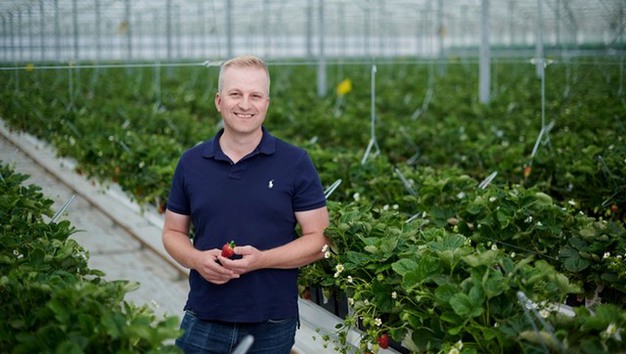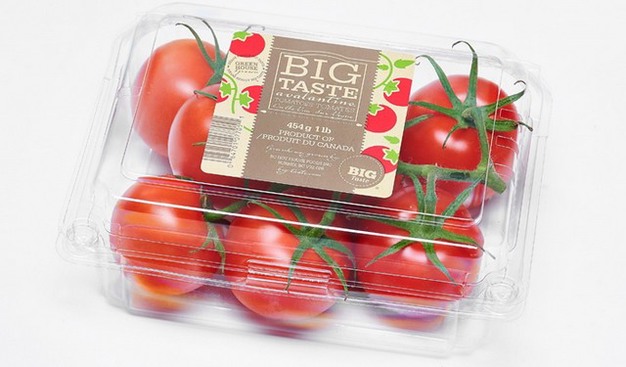“Our greenhouse industry covers only 0.1% of the available farmland in British Columbia but produces an enormous amount of vegetables. Roughly 12,000 acres would be needed to produce the same tonnage in the field,” says Colin Chapdelaine, president of BC Hothouse. Second only to Ontario, British Columbia has a greenhouse acreage of 800 acres. The area has fluctuated since cannabis legalization but has balanced out around 800 acres over the past few years.
In British Columbia, greenhouse installation and expansion is regulated by the BC Vegetable Marketing Commission (BCVMC), which implements a supply management system. BCVMC regulates three main crop categories: storage crops (root crops, cabbage, potatoes), processing crops (beans, broccoli, cauliflower, corn, etc.) and greenhouse crops (cucumbers, lettuce, tomatoes, and peppers).
 Colin Chapdelaine, president of BC Hothouse
Colin Chapdelaine, president of BC Hothouse
Supply management system
This supply management system ensures that British Columbia’s greenhouse expansion is measured and consistent, as potential growers need to apply for quota prior to construction and secure a distribution contract with one of seven approved agencies to sell the produce.
“Our supply management system has worked. You can’t just show up in British Columbia and build acres of greenhouses just because the pepper-growing conditions are good, for example. This has allowed farmers to maintain a good bottom line and prevents frenzied marketing,” explains Colin.
Moreover, potential growers need to consider the agricultural land reserve, which protects agricultural land from development. Should someone want to take land out of the reserve, they need to create some elsewhere. Between the supply management system and agricultural land reserve, British Columbia ensures that agricultural development occurs in sustainable, predictable manner and that the province’s beauty and sustainability is maintained.
 Eric Schlacht of Deltaview Farms, a partner of BC Hothouse growing strawberries and tomatoes
Eric Schlacht of Deltaview Farms, a partner of BC Hothouse growing strawberries and tomatoes
BC Hothouse – the original greenhouse grower in British Columbia
A major player in the British Columbia greenhouse industry, BC Hothouse was the original greenhouse grower, shipper and marketing in western Canada, according to Colin. BC Hothouse was established in 1973 and previously held every greenhouse company in the area. BC Hothouse is currently owned by Star Group and is a fully owned subsidiary of Star Produce since 2009.
“Since 2009, we have grown in acreage to be the second largest marketer for greenhouse crops and cover 150 acres, roughly 20% of the entire market while the remaining 80% is split between six other marketers,” says Colin.
BC Hothouse’s products include peppers, tomatoes, specialty tomatoes, cucumbers and strawberries. According to Colin, BC Hothouse is one of the largest cucumber growers in British Columbia and is the largest greenhouse strawberry producer in western Canada. BC Hothouse also has a sister company in Alberta called Whole Leaf, which is a high-tech lettuce greenhouse.
“We don’t want to be the biggest; we want to be the best. We want to be providing the best returns to our growers and big taste and value to our customers,” notes Colin.

Growth for BC Hothouse and the greenhouse sector
As with British Columbia’s greenhouse sector as a whole, BC Hothouse is experiencing organic growth and is consistently looking to innovate to improve grower returns. Colin explains that with the demand for Canadian-grown products on the rise in Canada, there has been a push towards 12-month growing programs through supplemental lighting and labor-saving technologies. As the westernmost province in Canada and bordering the Pacific Ocean, British Columbia has cloudy winters which reduce light intensity. There has also been an increased interest in soft fruit production, namely strawberries.
“We have made significant investment in the strawberry and soft fruit area. We see lots of opportunities for Canadians to enjoy locally produced soft fruits,” says Colin.
For more information:
BC Hothouse
https://bchothouse.com/
